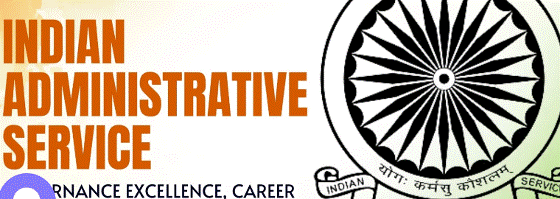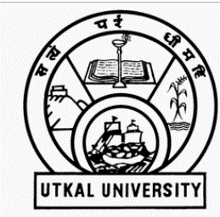





|
RABISLIST.COM List for All Your Needs
|
|
732-423-8052 [USA] |
|
IAS-INDIAN ADMINISTRATIVE SERVICE |
|
Indian Administrative Service (IAS) officers are responsible for maintaining law and order, revenue administration, and general administration in their assigned areas. They also hold key positions in the Union government, state governments, public-sector companies, and other statutory regulatory institutions.
In simple words, you can become an Indian Administrative Officer by clearing the civil services examination conducted by the Union Public Service Commission (UPSC) every year. This exam recruits officers into the civil services of the country which includes services like the IAS, IPS, IFS, IRS and many more.
IAS officers have many responsibilities, including: Collecting revenue and acting as courts in revenue matters Functioning as executive magistrates Supervising the implementation of developmental schemes Supervising the expenditure of public funds Creating and implementing policy Managing governmental funds Aiding in other government functions at federal and state levels Contributing to policy formulation Making final decisions in certain matters
IAS officers are recruited by the Union government through a rigorous examination process and appointed by the President of India for a permanent term. They are highly respected in society and have protections in the Constitution of India from arbitrary action by the elected executive. IAS officers hold their positions until they retire at the age of 60.
Professionals from these three services contribute to the governance of both the Government of India and individual states. Indian Administrative Service (IAS) officers find placements in various government bodies, including constitutional, staff, and line agencies, as well as in auxiliary, public sector, regulatory, statutory, and autonomous bodies.
Integral Part of Bureaucracy:
Pillar of Neutral Governance in India’s Executive Bureaucracy Aligned with the parliamentary system of government, the Indian Administrative Service (IAS) forms an integral part of the permanent bureaucracy of the nation. It stands as an inseparable component of the executive branch of the Government of India.
Consequently, the bureaucracy maintains political neutrality, ensuring administrative continuity regardless of the ruling party or coalition.
Carrer Trajectory:
Probation to Divisional Commissioner Leadership
Upon confirmation of their service, an Indian Administrative Service (IAS) officer undergoes a probationary period in the capacity of a sub-divisional magistrate.
Successful completion of this probation leads to assuming executive administrative responsibilities in a district, serving as a district magistrate and collector for a considerable duration.
Subsequent to this tenure, officers may be elevated to the position of overseeing an entire state administrative division, holding the role of a divisional commissioner.
Training Structure: Approach for Governance Challenges
The training structure for the Indian Administrative Service (IAS) is designed to provide a comprehensive and phased approach, ensuring officers are well-equipped for the challenges of governance.
The training occurs at various stages throughout an officer’s career: Foundation to Lifelong Learning
Foundation Course: Crafting Cohesion in Public Administration
Duration: Approximately 3 months
Location: Lal Bahadur Shastri National Academy of Administration (LBSNAA), Mussoorie
Objective: The Foundation Course marks the initial phase of training for newly recruited civil servants, fostering camaraderie and introducing officers to diverse facets of public administration.
District Training (Phase I):
Real-world Leadership in State Cadre
Duration: About 2 years
Location: Assigned district within the state cadre
Objective: Indian Administrative Service (IAS) officers undergo practical training at the district level, assuming roles such as Sub-Divisional Magistrates (SDMs) and Assistant Collectors. This phase provides hands-on experience in administrative functions, law enforcement, development initiatives, and public service.
Professional Training (Phase II): Expertise in Governance
Duration: Approximately 4 months
Location: LBSNAA, Mussoorie
Objective: This phase concentrates on specialized training encompassing various aspects of administration, governance, and policy implementation. Modules cover topics such as land revenue, judicial procedures, and other pertinent subjects.
Mid-Career Training Program (Phase III): Enhancing Leadership Globally and Locally
Duration: Variable
Location: Various institutions in India and abroad
Objective: Indian Administrative Service (IAS) officers undergo mid-career training to refine their skills and knowledge. This phase may include specialized programs at esteemed institutions within India or overseas, focusing on management, leadership, and public policy.
Postings in the State and Center: State and Central Governance
Duration: Throughout the career
Location: Assigned state or central government departments
Objective: Indian Administrative Service (IAS) officers hold positions in diverse government departments at the state and central levels, gaining experiences in policy formulation, implementation, and administration.
National Academy of Administration (NAA) and Lal Bahadur Shastri National Academy of Administration (LBSNAA) Programs: NAA and LBSNAA Programs for Excellence
Duration: Ongoing
Location: NAA, Mussoorie, and LBSNAA, Mussoorie
Objective: Throughout their careers, Indian Administrative Service (IAS) officers participate in various training programs, workshops, and seminars organized by NAA and LBSNAA to stay abreast of emerging issues, enhance leadership skills, and learn best practices.
Career hierarchy in the Indian Administrative Service (IPS): Ascending the Administrative Hierarchy
IAS Officer ↓ Sub-Divisional Magistrate ↓ District Collector ↓ Divisional Commissioner ↓ Secretary (State or Central) ↓ Additional Chief Secretary (State or Central) ↓ Principal Secretary (State or Central) ↓ Cabinet Secretary
This flowchart represents the hierarchical progression from an IAS Officer to various positions in the administrative structure. Each box represents a position, and the arrows indicate the flow of promotion or advancement in the administrative hierarchy.
Probationary Stage: Ground-Level Leadership and Development
Upon successful completion of training, IAS officers typically commence their careers at the grassroots level, gaining hands-on experience in the field. Key roles during the probationary stage include:
Sub-Divisional Officer (SDO): Facilitating Local Governance for Growth and Order
Role: Entry-level administrative position at the sub-district level.
Responsibilities: Assisting in sub-district administration, including revenue collection, law and order, and developmental activities.
Sub-Divisional Magistrate (SDM): Balancing Law, Order, and Development as Sub-Divisional Magistrate
Role: Entry-level magistrate position.
Responsibilities: Managing judicial and executive functions, maintaining law and order, overseeing development projects, and conducting administrative inquiries.
District Level: After the probationary period, IAS officers progress to district-level postings, shouldering more substantial responsibilities:
District Collector / Deputy Commissioner: Leading Governance for Order, Revenue, and Development
Role: Head of the district administration.
Responsibilities: Overseeing law and order, revenue administration, and development activities. Coordinating with various departments to ensure effective governance.
Additional District Magistrate (ADM): Streamlining Administration for Efficiency
Role: Assisting the District Collector in administrative functions.
Responsibilities: Handling specific portfolios, coordinating with different departments, and managing administrative tasks.
State Level: As IAS officers gain experience, they transition to state-level postings, where the scope of responsibilities widens:
Secretary to Government (State): Crafting Policies for Progress and Public Welfare
Role: In charge of specific state-level departments.
Responsibilities: Formulating policies, managing departmental affairs, and implementing government programs. Serving as a crucial link between the government and the public.
Commissioner / Special Secretary (State):
Guiding Specialized Policies, Coordinating Initiatives
Role: Overseeing specialized areas or departments.
Responsibilities: Engaging in specialized policy formulation, program implementation, and coordination with other departments. Handling key projects and initiatives.
Central Government and Senior State Level:
Central & State Strategic Advisor Joint Secretary to Government of India: Central Government Liaison
Role: Serving in various central government departments.
Responsibilities: Contributing to national-level policy formulation, handling inter-departmental coordination, and executing central government programs.
Additional Secretary / Principal Secretary (State): Strategic Policy Oversight
Role: Serving as a principal advisor to the state government.
Responsibilities: Overseeing major state departments, formulating state-level policies, and providing strategic guidance to the government.
Apex Administrative Positions: Central Secretary, State Chief, CEO Secretary to Government of India: Chief Administrator & Policy Leader
Role: Heading central government departments.
Responsibilities: Holding the top administrative position in a central government ministry, involved in policy formulation, program implementation, and inter-ministerial coordination.
Chief Secretary (State): Principal Advisor and Coordinator
Role: Highest-ranking state bureaucrat.
Responsibilities: Serving as the principal advisor to the Chief Minister, coordinating among state departments, and ensuring effective implementation of government policies
Additional Responsibilities: Viability and Success
Chief Executive Officer (CEO) / Managing Director (MD):
Role: Leading government corporations or autonomous bodies.
Responsibilities: Overseeing the functioning of public enterprises, ensuring financial viability, and achieving organizational objectives.
District Commissioner / Commissioner of a Division: Coordinating Progress and Order
Role: Overseeing multiple districts or divisions.
Responsibilities: Ensuring coordinated development, maintaining law and order, and implementing government programs across a broader geographical area.
Conclusion: In summary, the Indian Administrative Service (IAS) stands as a pivotal force in India’s governance, symbolizing excellence, dedication, and administrative expertise. As the primary administrative branch within the All India Services, IAS officers play crucial roles in the country’s bureaucracy, making substantial contributions to policy formulation, implementation, and governance across various echelons. |
|
PARTNERS |
